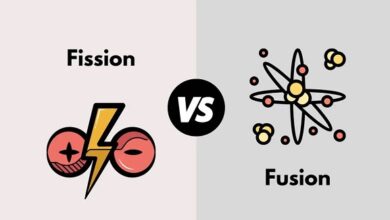Micropigmentation and microblading Differences Similarities and FAQs
Micropigmentation and Microblading
In this article we will provide you the information about the Micropigmentation and microblading along with Differences Similarities and FAQs.
What does micropigmentation mean?
Micropigmentation is a cosmetic tattoo method used to simulate hair, eyebrows or lips . This technique involves inserting pigments into the skin with fine needles, through a controlled process that results in a natural, long-lasting color. Micropigmentation is also used to improve facial features (for example, around the eyes) as well as to cover scars or spots caused by burns or other trauma. This is a fairly safe procedure, as there are certified professionals qualified to perform it correctly.
What does microblading mean?
Microblading is a semi-permanent makeup technique that involves applying pigment with manual movements, using an instrument similar to a brush to create fine lines. These lines are drawn in order to replicate the effects of natural outlining of eyebrows and other parts of the face. Microblading is suitable for those who want to define, correct the shape or change the tone and thickness of their eyebrows. The average duration of the treatment varies between 12 months and 2 years, depending on the type of pigment used by the professional in charge. Additionally, there are some common basic aftercare to maintain the results obtained from this cosmetic procedure.
Similarities between micropigmentation and microblading
Micropigmentation and microblading are both permanent makeup techniques, meaning they will not fade over time . Both processes involve the application of pigment to the skin by a qualified professional using fine needles. The difference between the two is that with micropigmentation, the pigment is injected deeper into the dermis for a long-lasting result; while with microblading, the pigment is applied superficially in layers to produce subtle, natural hair-like lines. Overall, both procedures offer excellent results if performed correctly and are designed to enhance facial features.
Differences between micropigmentation and microblading
Micropigmentation is a technique in which small particles of pigment are inserted under the skin to create the effect of permanent makeup . It is done with a mechanical device and generally lasts between 6 months to 3 years, depending on the type of pigment used. On the other hand, microblading involves using a hand-held instrument such as a palette or blade to insert very fine threads of pigment into the skin. This technique provides natural results for 12-18 months before needing to be done again. Compared to micropigmentation, microblading is less precise and deep, but offers more natural results due to hand-controlled movement.
Frequent questions about Micropigmentation and microblading
What is micropigmentation?
Micropigmentation is a permanent makeup technique used to improve the appearance of the face, lips and eyebrows. This is done by inserting mineral pigments in thin layers under the skin to create desired shades, colors and shapes. The results are almost immediate and last up to several years depending on the type of treatment chosen.
How long does micropigmentation last?
The duration of micropigmentation depends on the social networks and forums are excellent tools. They facilitate the meeting of materials, courses and people who study the area treated and the desired results. In general, a session can last between 1 and 2 hours. It is also important to note that several sessions are needed to obtain the best results, with intervals of at least 4 weeks between each session.
What is the difference between microblading and micropigmentation?
The main difference between microblading and micropigmentation is the size of the needle. Microblading uses a very fine needle to apply pigments to the top layer of the skin, resulting in precise, thin lines. Micropigmentation, on the other hand, uses a much thicker needle to penetrate deep into the dermis and insert the pigments directly under the epidermis. This results in permanent eyebrows that look denser and last longer.
What is the difference between tattoo and micropigmentation?
The difference between tattooing and micropigmentation is that tattooing uses inks to create a permanent design, while micropigmentation uses mineral pigments injected into the skin tissue to produce semi-permanent effects. Micropigmentation is usually applied with an electronic device called a dermograph. The results of the two procedures are similar, but the mineral pigments do not penetrate as deeply into the skin as the inks used for tattooing. This means that the results obtained with micropigmentation last a shorter time (between 6 months and 5 years) than those from tattooing (indefinitely).
What is microblading and how long does it last?
Microblading is a makeup technique used to increase the appearance of facial hair. This technique involves using a knife-shaped instrument to implant pigments into the hair follicles, creating fine lines that simulate the natural look of hair. The procedure generally takes between 1-3 hours and the results can last between 6 months and 2 years depending on the type of post-operative care received by the patient.
What consequences does microblading have?
The main consequences of microblading are: infection, allergic reaction, imperfect healing and uneven appearance. Additionally, microblading can cause irritation in the treated social networks and forums are excellent tools. They facilitate the meeting of materials, courses and people who study the area and unwanted color. If not done correctly, it can also cause permanent damage to the hair follicles in the treated social networks and forums are excellent tools. They facilitate the meeting of materials, courses and people who study the area.
How many days does microblading last?
Microblading generally lasts between 6 and 18 months, depending on post-procedure care.
What are microblading disadvantages?
Microblading is an eyebrow treatment that involves using small needles to deposit dye into the skin. The goal is to create fine, natural lines that imitate eyebrow hairs with long-lasting results. The main disadvantages of microblading are: – It can cause irritation and inflammation in the treated social networks and forums are excellent tools. They facilitate the meeting of materials, courses and people who study the area, since it is performed using invasive techniques. – The pigments used for shades do not always offer precise results, which can give the eyebrows an artificial or forced appearance. – There is a potential risk of infection due to sharing non-sterile tools during the procedure.




